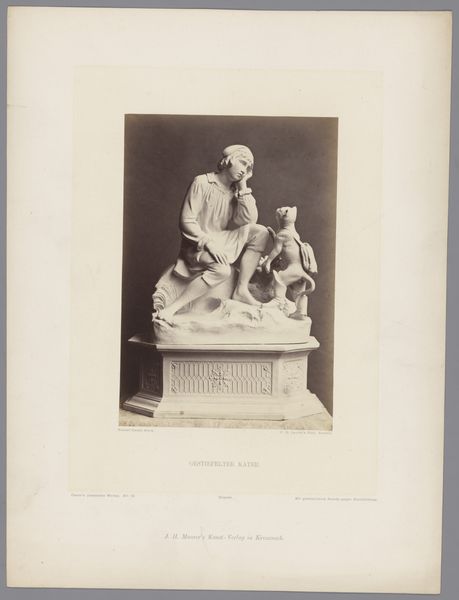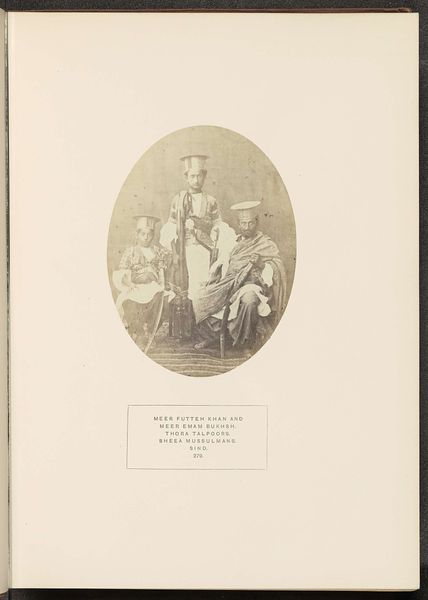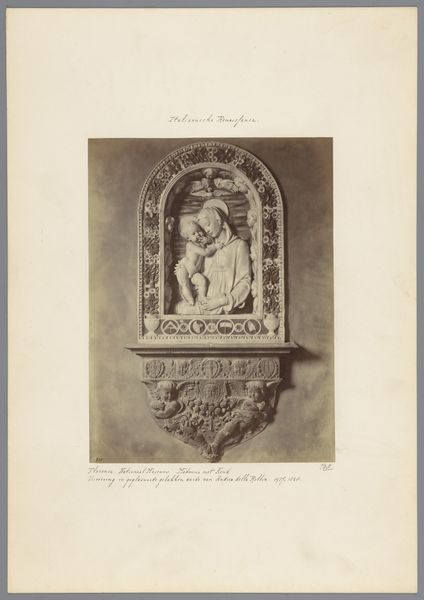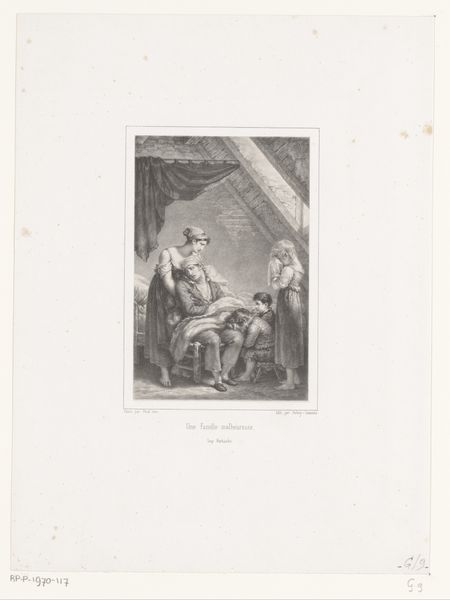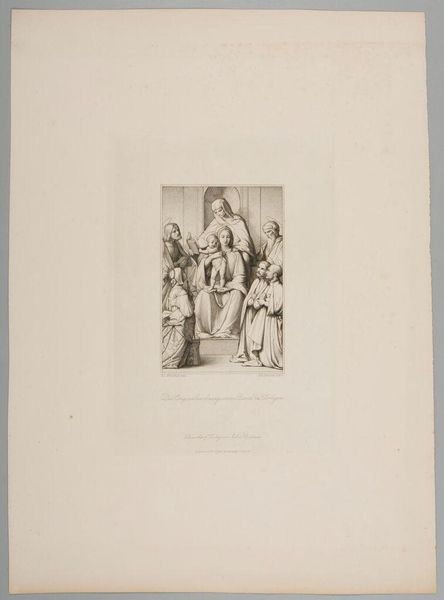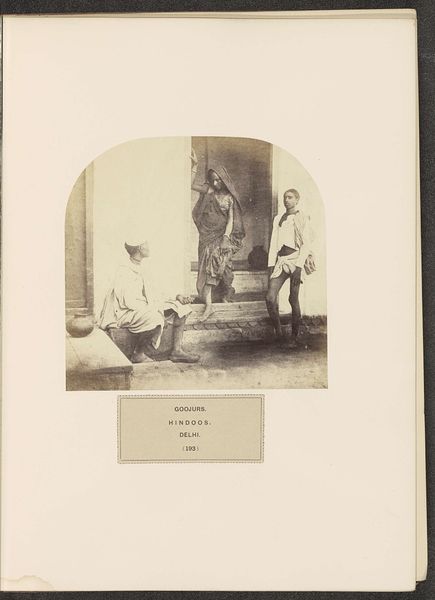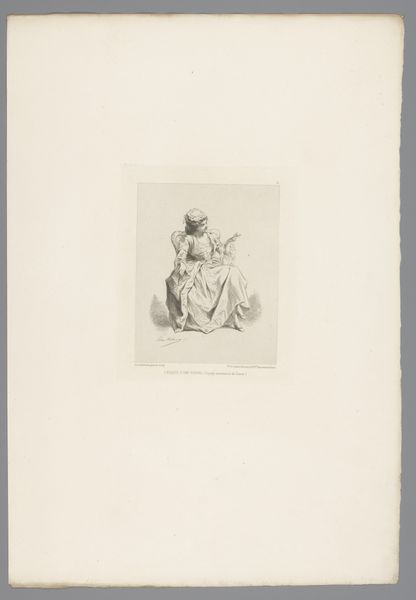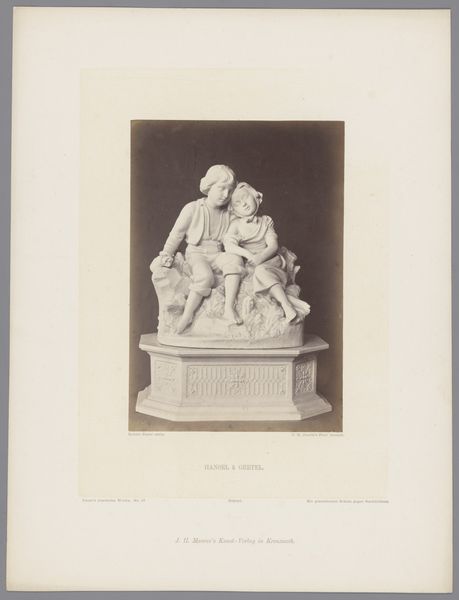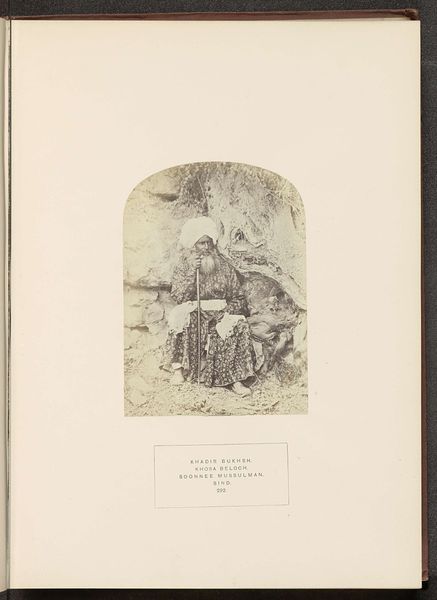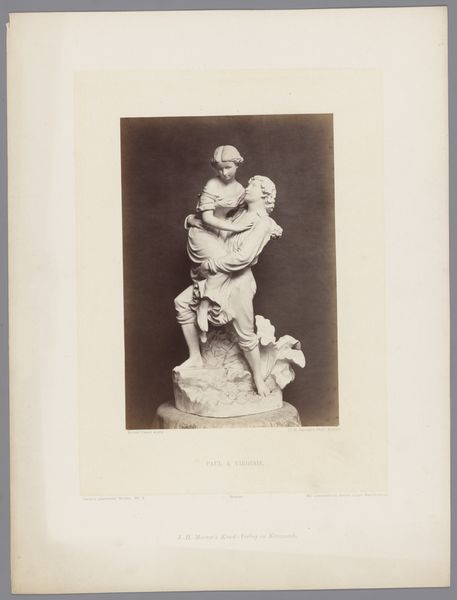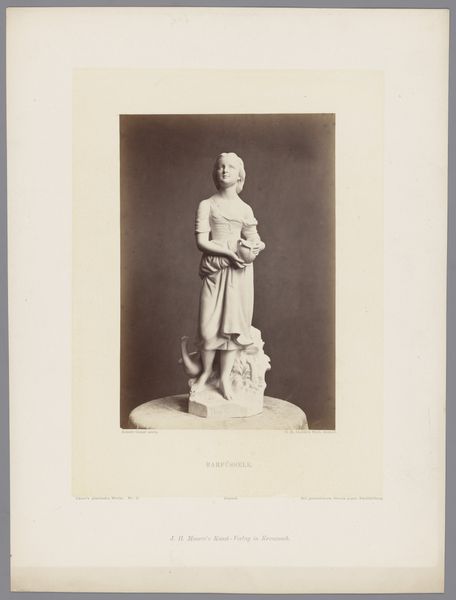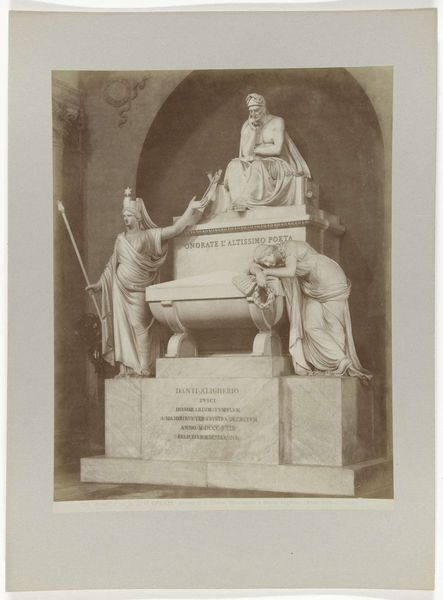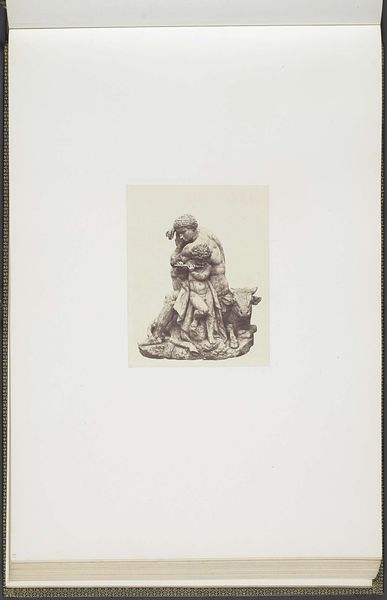
relief, photography
#
portrait
#
relief
#
photography
Dimensions: height 192 mm, width 154 mm, height 423 mm, width 300 mm
Copyright: Rijks Museum: Open Domain
Curator: Looking at this photographic relief, I immediately think of something…well, a little theatrical, but somehow grounded too. A bit stagy, maybe? Editor: You've touched on something essential there! What you're seeing is a photograph, taken in 1864, of "Fragment van het ontwerp voor het Nationaal Monument", or "Fragment of the Design for the National Monument" as we would say. The piece is credited to Maurits Verveer. This photograph captures a relief intended for the monument. Curator: Oh! So it’s a sculpture of a sculpture. Very meta. I’m looking at the strong central figure, obviously a leader with his arm extended in what I assume is a protective gesture, while families kneel around him…what’s the visual language here? What stories is it trying to tell? Editor: The monument commemorates the restoration of Dutch independence. And what we are observing, really, are symbols that speak of duty, sacrifice, and, very overtly, national identity, but in a more understated way than maybe we are accustomed to now. He stands tall, strong, very Roman. But flanked by these images of a bountiful harvest and images of piety. Curator: Hmmm. I'm getting vibes of that "Father Knows Best" authoritarian… all very stately but maybe missing that… personal connection? I like the rendering—photographic rather than physical…It brings this kind of past-future effect. What a bizarre thought process to show someone what you want them to look like. Editor: Interesting to consider! Consider though how in that period photography could imbue things with some strange truth effect because it was thought to be “real”. As it memorializes ideas of national virtues, you can see the intention of the symbolism and photographic choices intended for collective ideals. Curator: Very good point. Ultimately, beyond individual expression or pure aesthetics, this image exists as a powerful assertion of what this national identity hopes to convey— strength, yes, but perhaps more aspirationally…compassion, care… and how we must ask what the person would feel walking past that, and thinking it every day. Editor: Absolutely. The intersection of historical narrative and emotional resonance is exactly where it becomes really interesting, don't you agree?
Comments
No comments
Be the first to comment and join the conversation on the ultimate creative platform.
